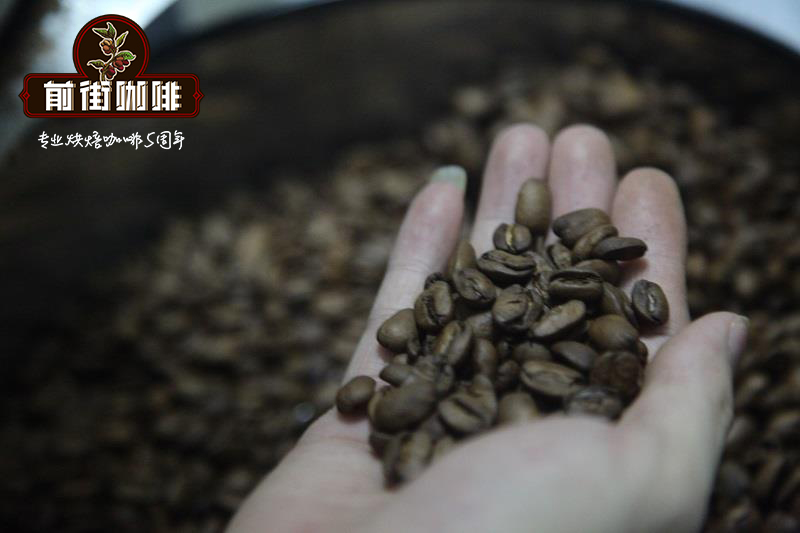What are the changes of soft beans, sun beans or low-altitude beans during baking?

Professional coffee knowledge exchange more coffee bean information please follow the coffee workshop (Wechat official account cafe_style)
Sun beans, soft beans or low-altitude beans change similarly during baking, and I classify them into the same group. Because sun-dried beans take longer than washed beans, the relative moisture content is also relatively low, especially in the part of the bean surface, so the dehydration of the bean surface (the whole bean turns white) is easy to make during the baking process. The following group of photos are Tchembe produced by Ninety plus. He belongs to mildly fermented sun beans. I don't say much that they are famous beans. You can find them on the Internet.
The characteristic of sun-dried beans is that compared with washed beans, the moisture content of its surface (at least) is relatively low; therefore, it is easy to produce white spots on the surface during steaming and spread to the whole bean, as shown in the following figure-the whole bean turns white when it is steamed at 127 degrees. From the section view, we can see that the whole bean only has a high water content and is still a little green at this stage.
After steaming, the surface of the bean will begin to enter the Mena reaction period, and at the initial stage, a light yellow reaction will occur on the bean surface. Because the dehydration of the bean surface is very uniform, the color of the whole bean is also quite uniform, and a little green can be seen from the profile.
When the bean temperature is 160C, the Mena reaction of the bean surface enters a peak period. Due to the proper steaming treatment, the color of the whole bean is quite uniform, and the original green of the bean core also begins to turn yellow, indicating that the bean core is also undergoing the Mena reaction.
At 172 degrees, the brown reaction of the beans is quite average, and the internal color gradually deepens, when the beans show the smell of popcorn or toast, representing the extreme Mena reaction, commonly known as dehydration. However, the sun-dried beans are dehydrated enough, so the dark wrinkles in the areas where the dehydration is insufficient are almost invisible. If the beans are washed, the wrinkles on the bean surface are quite obvious at this stage. In order to prevent the next caramel reaction from going wrong, I will turn off the fire and wind here to avoid "excessive" heating (which does not mean cooling), resulting in the next excessive caramel smell. But I don't think caramelization has officially begun at this stage.
An explosion: it starts to explode at 186 degrees. At this time, the sound you hear is only a few of the many beans, and the rest should be in the state before the explosion. Their stomachs should be full of moisture and ready to explode. Mena's reaction is coming to an end. If you put beans at this time, you will drink a lot of aroma, sucrose sweet (simple sweet, non-caramelized sweet). But if you don't handle it well, it's easy to drink grass and astringency, and your mouth and your stomach will cover it.
After a dense explosion: more than half of the beans are developed and exploded, and the water accumulated in the bean core is also fully removed. 1% of the water can be drained from the beginning of the explosion to the end of the explosion. This is the most vigorous period for bean drainage. If the moisture content is measured, only 1% is left, water activity aw=0.2, in short, beans do not have free water. But it should be noted that if you want to continue baking until the second explosion, you have to find a way to leave a little water to bring in, otherwise, the free water is gone, then the bond water suffers, and in the end, if there is no water, it will scorch until the consequences of the second explosion are unbearable.
Then how to leave water into the second explosion? I'm sorry that the second explosion is not my field at the moment, and I can't answer it, but I'm pretty sure that the whole technique should be changed, and the concept of extending the time after the first explosion should never be used to bake the beans after the first explosion. it will be ugly to die, because you will get a very bitter taste.
I know that some experts in baking two-baked beans will come faster than baking them. Of course, the method is different. I believe they also consider the moisture and bitterness after baking.
In addition, there is an obvious difference in the changes inside the beans from before to after the explosion. At 186 degrees, the outer edge of the bean is darker and the core is lighter, but after the explosion, on the contrary, it becomes darker inside. I am still exploring this phenomenon, but I know that the bean core is undergoing caramelization at this time.
What I found:
As long as the beans produce white spots during the steaming period, it represents the rapid loss of water in this part. When I sliced this part, this part is quite crisp and the color is relatively light (light).
The beans are steaming the parts where there are no white spots. When I was slicing, this part was quite tough. It took a little effort to cut, and the color was dark during the Mena reaction period. After the dehydration is completed, this area will form a sharp contrast with the faster dehydration areas, forming distinct wrinkles, commonly known as bean shrinkage points.
Therefore: the leukoplakia area will then fade and the structure will become brittle during the Mena reaction period, and the Mena reaction at this time is not complete. What for? The reason is that because the leukoplakia is dehydrated too quickly, the temperature of the Mena reaction period is up but there is not enough water to provide, so the reaction is incomplete, the color is light and the aroma is weak.
So it's not good to have leukoplakia in this way. Excessive dehydration on the surface is helpful to the formation of internal Mena reaction.
I think the white spot on the surface of the bean because of the crisp structure can create a ventilation channel to help the moisture inside the bean to disperse. The key point of the whole baking is that the beans are fully ripe, and the formation of white spots helps to bake the beans thoroughly, because after a drainage channel is formed, a proper heating rate can help the internal temperature of the beans reach the Mena reaction period, and the moisture can also be properly reduced to aw=0.7.
Of course, if the internal moisture is too high or too low will produce undesirable results. So this manipulation (wind and fire configuration, heating rate) to mix dehydration, the internal temperature of beans, is an art.
What is the condition if there are too few white spots on the surface of beans?
That means that the surface dehydration is appropriate or insufficient. At this time, in the Mena reaction period, because there is enough water, a good Mena reaction can be formed, but because the structure is tough and can not form a crisp dehydration channel, so the water inside the beans will accumulate in it and cannot be discharged. Once the Mena reaction temperature, water is too high, it will start the chlorogenic acid hydrolysis reaction, will produce a bad sense of bitterness (vinyl catechol polymer). That's what people call dehydration deficiency.
Important Notice :
前街咖啡 FrontStreet Coffee has moved to new addredd:
FrontStreet Coffee Address: 315,Donghua East Road,GuangZhou
Tel:020 38364473
- Prev

One of the factors affecting coffee how does water quality affect coffee extraction?
For more boutique coffee beans, please add private Wechat Qianjie, WeChat: (long press to copy) qiannjie 01 | Preface We know that the main factors affecting coffee are place of production, roasting, grinding, water temperature, proportion, brewing method, freshness, and water quality. No matter what kind of factors, it is necessary to study the influence of various factors on coffee flavor from a scientific point of view.
- Next

How to judge the extraction state of a cup of coffee?
Professional coffee knowledge exchange more coffee bean information please follow the coffee workshop (Wechat official account cafe_style) this article will be based on the basic theory of coffee extraction, as well as tasting coffee in three cases: over-extraction, under-extraction and ideal extraction. Extraction can be said to be the most important but least understood part of coffee brewing. Extraction represents everything. If there is no extraction or even no
Related
- Beginners will see the "Coffee pull flower" guide!
- What is the difference between ice blog purified milk and ordinary milk coffee?
- Why is the Philippines the largest producer of crops in Liberia?
- For coffee extraction, should the fine powder be retained?
- How does extracted espresso fill pressed powder? How much strength does it take to press the powder?
- How to make jasmine cold extract coffee? Is the jasmine + latte good?
- Will this little toy really make the coffee taste better? How does Lily Drip affect coffee extraction?
- Will the action of slapping the filter cup also affect coffee extraction?
- What's the difference between powder-to-water ratio and powder-to-liquid ratio?
- What is the Ethiopian local species? What does it have to do with Heirloom native species?

